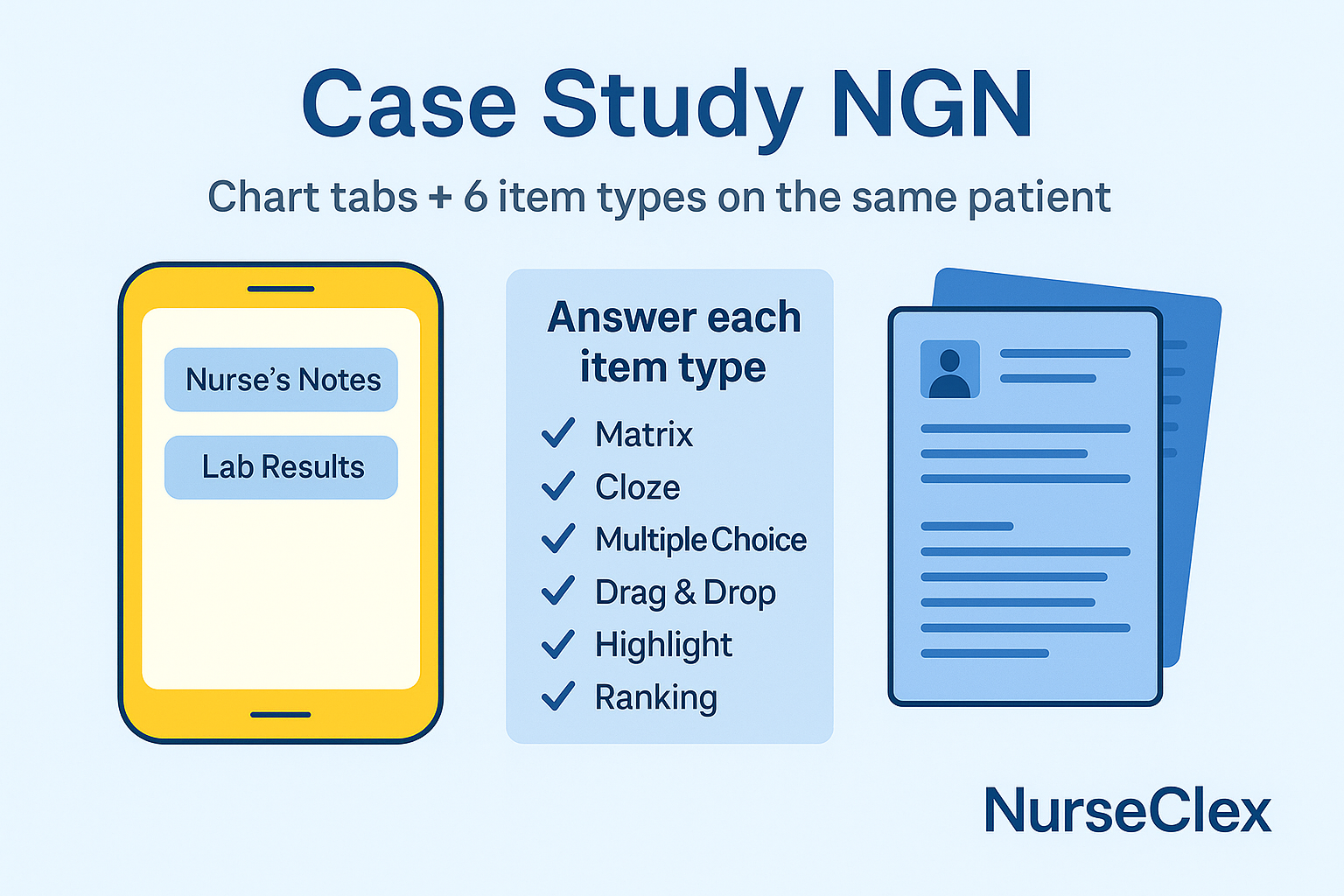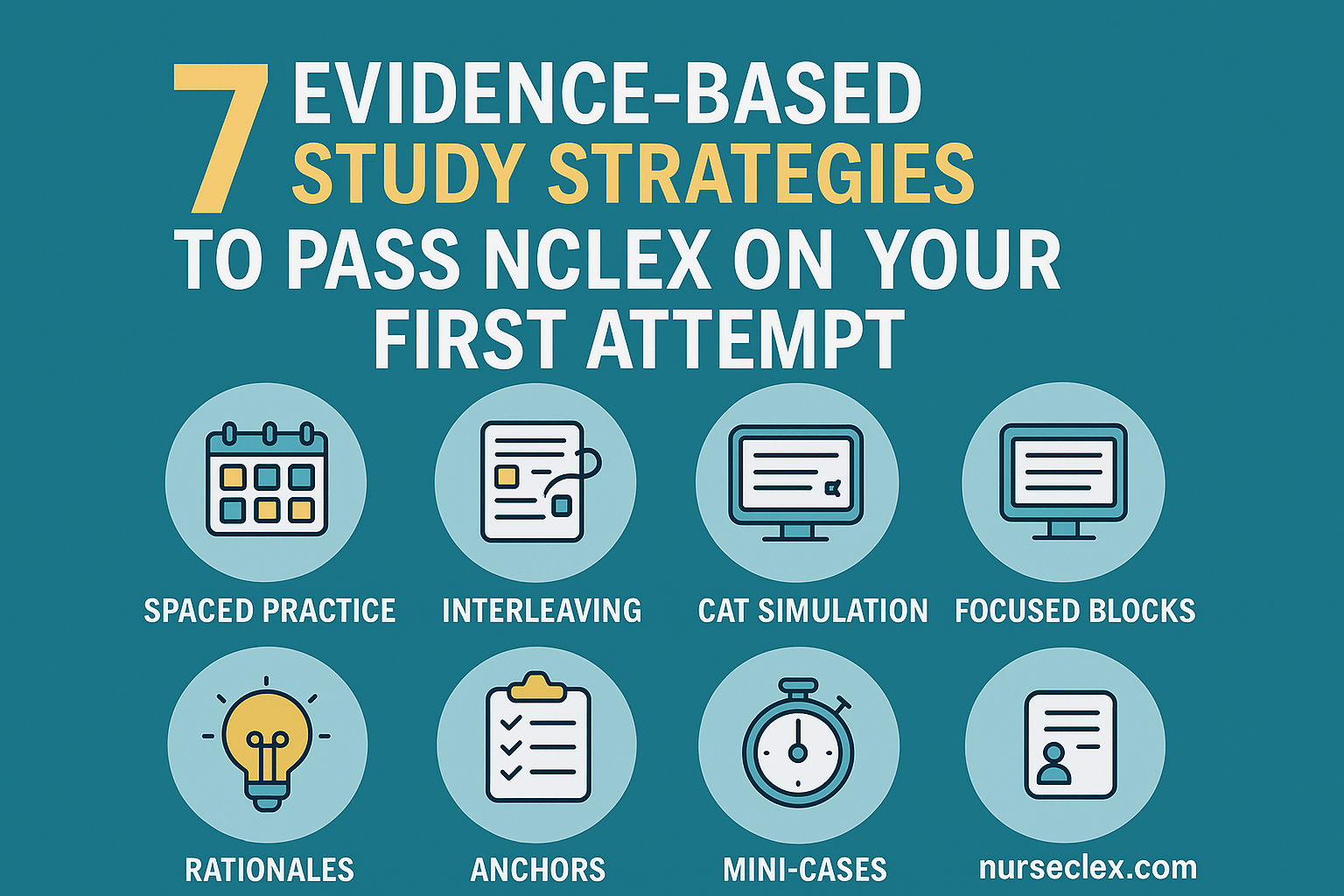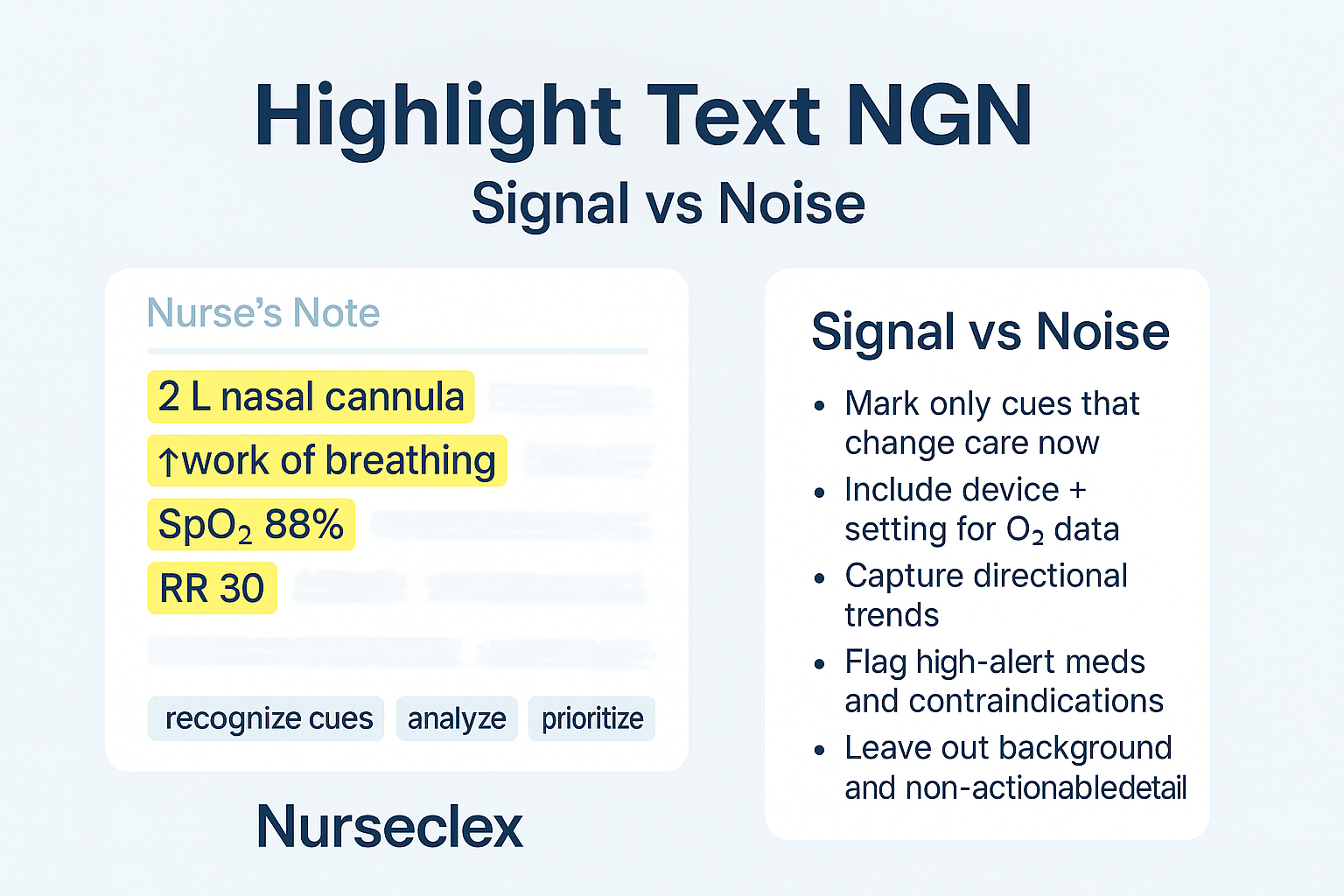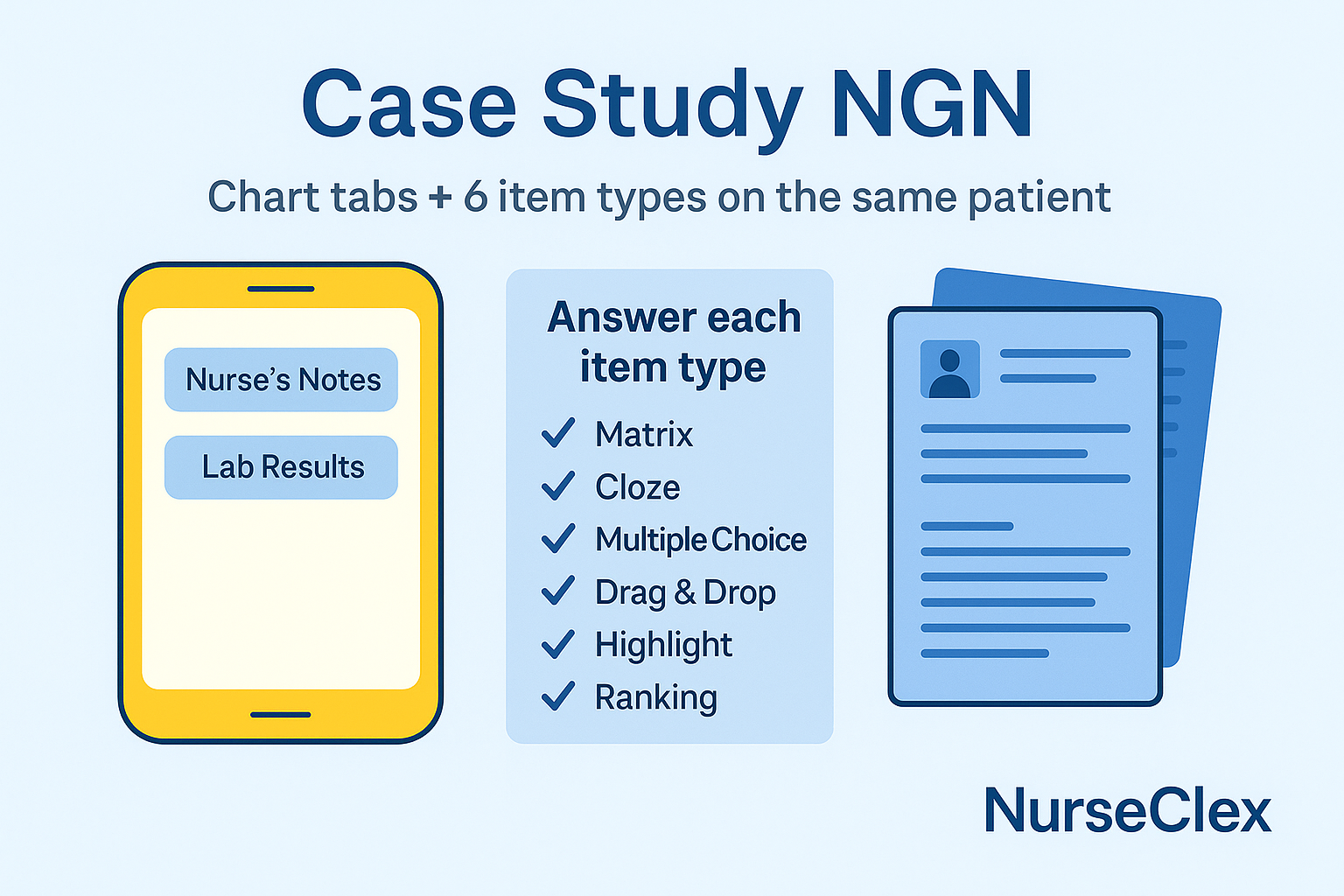One-sentence definition (featured snippet)
A case study NGN set unfolds over several items aligned to the CJM steps; you can bank points at each step by staying inside the current task.
If a step feels fuzzy, open the quick guides: Clinical Judgment vs Critical Thinking, Cue Recognition, and Analysis & Prioritization. Official context: NCSBN.
The six-step map (what each item is really asking)
-
Recognise cues: pull relevant findings (vitals, labs, symptoms, trends).
-
Analyse cues: cluster and infer the most likely problem(s).
-
Prioritise hypotheses: rank by danger + likelihood (ABCs, safety, stability, time).
-
Generate solutions: list safe, effective interventions for the priority problem.
-
Take action: choose the safest first step.
-
Evaluate outcomes: state what you’ll check to confirm effect and catch risk.
Exam tip: Items often isolate a single step. Answer for that step only.
Mini case (cardio—DVT risk)
Snapshot: POD1 abdominal surgery. HR 118, BP 100/64, RR 24, SpO₂ 92% RA, temp 38.5°C, calf tenderness (R).
-
Recognise: tachycardia, low-normal BP, low SpO₂, fever, and unilateral calf tenderness.
-
Analyse: VTE/DVT with PE risk.
-
Prioritise: VTE threat outranks atelectasis or routine pain.
-
Solutions: bed rest; provider notification; confirm anticoagulation orders; prep imaging; do not massage.
-
Action: implement safety-first steps before ambulation.
-
Evaluate: recheck SpO₂, chest pain, and dyspnoea; repeat vitals.
Mini case (resp—COPD exacerbation)
Snapshot: RR 30, SpO₂ 88% on 2 L NC, accessory muscles, anxious, 3–4-word sentences.
-
Recognise: hypoxaemia + ↑ work of breathing.
-
Analysis: acute exacerbation; ventilation-perfusion issue.
-
Prioritise: oxygenation risk > education.
-
Solutions: High-Fowler’s; escalate O₂ device/flow per protocol; bronchodilator if ordered.
-
Action: position and device change first.
-
Evaluate: recheck SpO₂, RR, and comfort in 5–10 minutes.
How to bank points in case studies
-
Stay in step: if the task is “recognise cues”, don’t treat yet.
-
Lock safe picks for partial credit (matrix/cloze steps help here).
-
Use trend logic (same device/setting) on evolving data.
-
Match actions to scope (RN/LPN/UAP) to remove traps quickly.
Errors and quick fixes
| Error | What happened | Fix |
|---|---|---|
| Step jumping | Treated while asked to recognize | Re-read the stem; answer that step |
| Ignoring trends | Reacted to one number | Confirm direction on same device/settings |
| Teaching during instability | Delayed stabilization | Stabilize; teach later |
| Scope violations | Assigned RN task to UAP/LPN | Use role table rules |
Quick checklist
-
Step identified (CJM)
-
Priority framed with ABCs/Safety/Stability/Time
-
Solutions/actions that are the least invasive that works
-
Evaluation measures effect and safety
-
Scope/delegation confirmed
CTA — simulate full case sets with scoring
Run case study NGN simulations, review rationales, and track your CJM step gains.
Join free: Nurseclex.com
Image (hero)
Title: “Case Study NGN Across CJM”
Alt: “Six boxes linking CJM steps to case study items with partial credit callouts”
FAQs
How many points can I earn in a case study NGN set?
Varies by item count and type, but you can earn at each step—secure safe picks even if you’re unsure about others.
Do earlier mistakes ruin later items?
No. Treat each item cleanly and score what you can.
How do I prepare the fastest?
Drill step-focused sets and then full cases with timed simulations and error logs.







